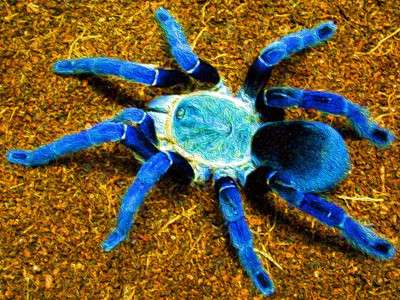
Description
While Grammostola pulchripes and Eupalaestrus campestratus resemble each other in appearance, the latter is substantially smaller with a maximum leg spread of six inches and yellow striped marks around its patellae.
Geographical Distribution
Native to Paraguay, Argentina, and Brazil, the pink zebra beauty tarantula is a terrestrial tarantula.
Behavior
This species is quiet, slow-moving, and gentle, which appeals greatly to the pet trade.

Care as Pet
Terrarium
The terrarium for your pink zebra beauty tarantula needs to be at least 5 to 10 gallons in size. Since these spiders can’t climb very high, a terrarium with a sizable surface area at the bottom of the tank is the best option. Put the tank away from any strong lights in a room with little traffic. Since these spiders dislike bright lights, they will probably hide if the lights are on. You don’t need to add any additional lights to the terrarium as a result of this.
Substrate and Decor
The substrate, or base of the terrarium, must be fairly deep because pink zebra beauty tarantulas tend to burrow. In your substrate, aim for a depth of at least 4 inches. These spiders aren’t too particular about the substance they live in, so you might use peat moss or potting soil. Whatever you use should be able to absorb water because the terrarium for your spider has to be damp. You can choose readymade substrate made for pet terrariums from your neighbourhood pet store if you’re unsure of what to buy.
You should think about including some additional decorations, such as a sizable piece of bark or rocks that the spider can utilize for digging in addition to the foundation substrate.
Temperature and Humidity
Keep in mind the origins of your spider when adjusting the humidity and temperature of its habitat for your pink zebra beauty tarantula. They thrive in warm, humid environments and will thrive in a humid, warm terrarium. It should be between 75 and 80 degrees Fahrenheit and between 67% and 75% humid. In addition to making sure your spider is hydrated, you should overfill her water dish to keep the terrarium’s humidity levels high. Additionally, you can softly sprinkle the substrate; however, you should exercise caution because your spider needs a moist, not wet, environment. Be careful not to mist your spider whenever you mist.
Diet
Your spider will favour medium-sized live insects like mealworms or crickets for food. They occasionally devour animals that are comparable to themselves, like pinkie mice or geckos. Because they just need to be fed a few insects once a week, tarantulas are minimal maintenance.
Table





